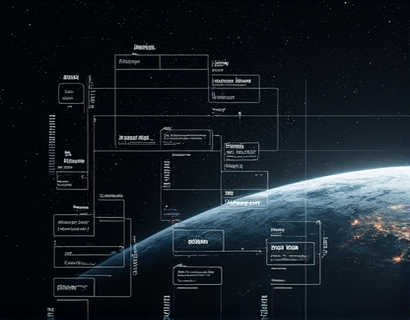Maximizing Leadership Efficiency: Advanced Dashboard for Streamlined Team Management and Enhanced Productivity Across Industries
In today's fast-paced business environment, effective leadership is crucial for driving success and maintaining a competitive edge. Leaders are often tasked with managing large, diverse teams across various departments and functions. The complexity of these tasks can lead to inefficiencies, miscommunications, and suboptimal decision-making. To address these challenges, an advanced dashboard designed specifically for leadership has emerged as a transformative tool. This dashboard is expertly crafted to streamline the management of large teams, enhance communication, and empower informed decision-making, ultimately leading to increased productivity and efficiency across multiple industries.
The need for such a dashboard stems from the inherent difficulties in managing dispersed and dynamic teams. Traditional management methods often rely on manual processes, email communications, and sporadic meetings, which can be time-consuming and prone to errors. An advanced dashboard offers a centralized platform where leaders can monitor team performance, track progress, and facilitate seamless communication. This centralized approach not only saves time but also ensures that all team members are aligned and working towards common goals.
Key Features of an Advanced Leadership Dashboard
An advanced leadership dashboard encompasses a range of features designed to optimize team management and enhance productivity. Some of the key features include:
- Real-time Performance Tracking: Leaders can monitor the progress of individual team members and the team as a whole in real-time. This feature provides immediate insights into productivity levels, task completion rates, and areas needing attention.
- Customizable Dashboards: Each leader can tailor the dashboard to their specific needs, selecting the metrics and KPIs that are most relevant to their team and organization. This customization ensures that the dashboard remains a valuable tool without being overwhelming.
- Enhanced Communication Tools: Integrated communication features such as chat, video conferencing, and notification systems facilitate seamless interaction among team members. This reduces the reliance on external tools and keeps all communications within a single platform.
- Project Management Integration: The dashboard can integrate with popular project management tools, allowing leaders to oversee projects from initiation to completion. This integration ensures that all project-related data is centralized and easily accessible.
- Reporting and Analytics: Advanced reporting and analytics capabilities provide leaders with deep insights into team performance, trends, and areas for improvement. These insights can inform strategic decisions and drive continuous improvement.
Streamlining Operations
One of the primary benefits of an advanced leadership dashboard is its ability to streamline operations. By centralizing data and processes, leaders can reduce the administrative burden and focus more on strategic tasks. For instance, real-time performance tracking allows leaders to identify bottlenecks and address them promptly, ensuring that projects stay on schedule. Customizable dashboards ensure that leaders are only viewing the information that is most pertinent to their role, reducing information overload and increasing efficiency.
Moreover, the integration of communication tools within the dashboard eliminates the need to switch between multiple platforms. This not only saves time but also ensures that all team interactions are documented and accessible, promoting transparency and accountability. Project management integration further enhances this streamlining by providing a unified view of all ongoing projects, their statuses, and associated tasks. This holistic approach helps leaders manage resources more effectively and allocate them where they are most needed.
Enhancing Communication
Effective communication is the backbone of any successful organization. An advanced leadership dashboard significantly enhances communication by providing a centralized platform for all team interactions. Integrated chat and video conferencing tools enable leaders to hold meetings, provide feedback, and collaborate with team members in real-time, regardless of their physical location. This is particularly beneficial for organizations with remote or distributed teams, as it fosters a sense of unity and ensures that everyone is on the same page.
Notifications and alerts within the dashboard keep team members informed about important updates, deadlines, and changes. This proactive approach to communication reduces the likelihood of miscommunication and ensures that tasks are completed on time. Additionally, the ability to tag specific team members in messages and notifications ensures that important information reaches the right people quickly and efficiently.
Empowering Decision-Making
Data-driven decision-making is essential for leaders aiming to drive productivity and efficiency. An advanced dashboard empowers leaders with comprehensive analytics and reporting tools that provide actionable insights. By analyzing performance metrics, trends, and KPIs, leaders can make informed decisions that align with the organization's strategic goals. For example, identifying patterns in team performance can help leaders implement targeted training programs or adjust workloads to optimize productivity.
Moreover, the dashboard's real-time data updates allow leaders to respond swiftly to changes in the business environment. This agility is crucial in today's rapidly evolving market, where the ability to adapt quickly can mean the difference between success and failure. By having access to timely and accurate data, leaders can make strategic adjustments on the fly, ensuring that their teams remain competitive.
Across Various Industries
The benefits of an advanced leadership dashboard are not limited to a specific industry. Whether in healthcare, finance, manufacturing, or technology, the core functionalities of such a dashboard can be tailored to meet the unique needs of any organization. In healthcare, for instance, leaders can use the dashboard to monitor patient care processes, track staff schedules, and ensure compliance with regulatory standards. In finance, the dashboard can help managers oversee trading activities, monitor risk exposure, and optimize resource allocation.
In manufacturing, the dashboard can integrate with IoT devices to track production lines, monitor equipment performance, and predict maintenance needs. For technology companies, the dashboard can facilitate agile project management, track software development milestones, and ensure seamless collaboration among cross-functional teams. The versatility of the dashboard makes it an invaluable tool across diverse sectors, enhancing leadership effectiveness and driving productivity.
Case Studies and Success Stories
Several organizations have already experienced the transformative impact of advanced leadership dashboards. For example, a large manufacturing company implemented a dashboard to streamline its production processes. Within six months, the company reported a 20% increase in production efficiency and a 15% reduction in operational costs. The real-time monitoring and data-driven insights allowed the leadership team to identify and address inefficiencies promptly, leading to significant improvements in overall performance.
In the healthcare sector, a hospital network adopted a dashboard to enhance patient care and operational efficiency. The dashboard enabled nurses and administrators to track patient flow, monitor staff availability, and optimize resource allocation. As a result, the hospital saw a 10% reduction in patient wait times and a 12% improvement in staff satisfaction. These outcomes underscore the dashboard's ability to enhance both operational efficiency and employee well-being.
Challenges and Considerations
While the benefits of an advanced leadership dashboard are clear, there are several challenges and considerations to keep in mind when implementing such a tool. One common challenge is ensuring user adoption and engagement. Leaders must invest time in training their teams to use the dashboard effectively and address any resistance to change. Providing comprehensive onboarding and ongoing support can help overcome this hurdle.
Another consideration is data security and privacy. With sensitive information being centralized in one platform, it is crucial to implement robust security measures to protect against breaches and ensure compliance with data protection regulations. Leaders should work closely with IT experts to establish secure access controls and encryption protocols.
Lastly, it is important to choose a dashboard that is scalable and flexible. As organizations grow and evolve, their management needs will change. A dashboard that can adapt to these changes without requiring extensive modifications will provide long-term value.
Conclusion
In conclusion, an advanced leadership dashboard is a powerful tool for maximizing leadership efficiency and driving productivity across various industries. By streamlining operations, enhancing communication, and empowering data-driven decision-making, such a dashboard helps leaders manage large, diverse teams more effectively. While there are challenges to consider, the benefits far outweigh the costs, making it an essential investment for any organization aiming to stay competitive and achieve its strategic goals.










































